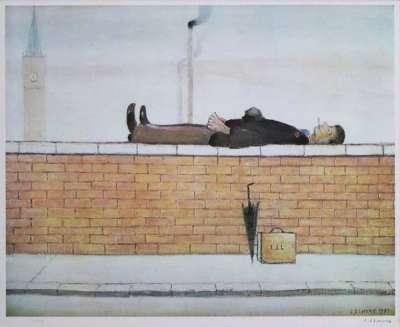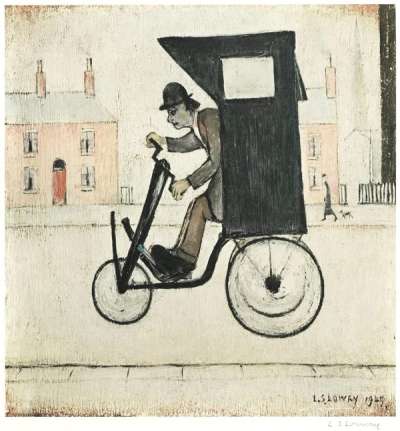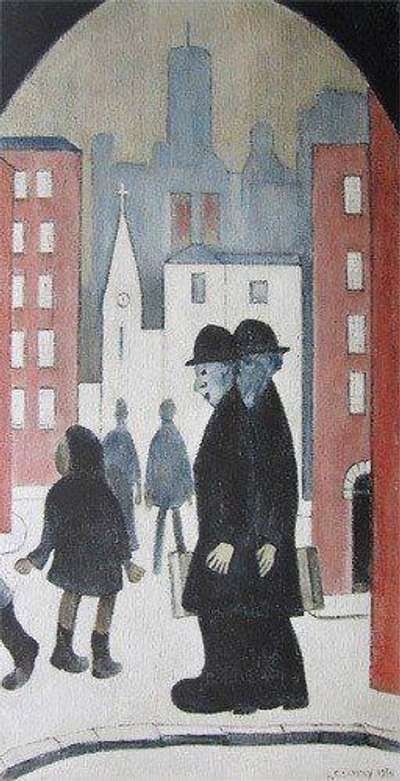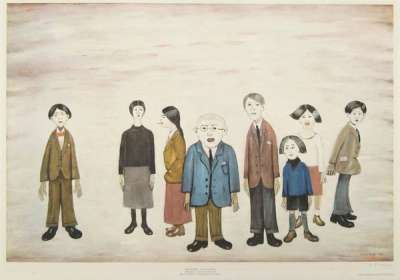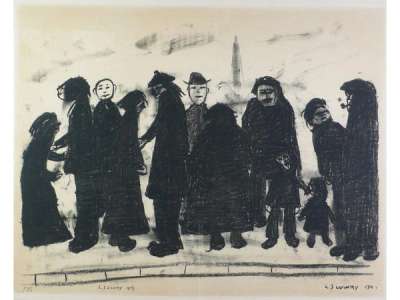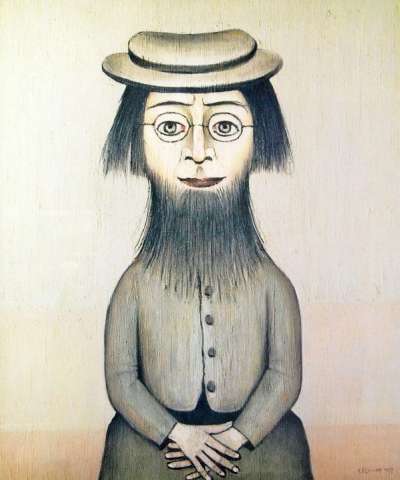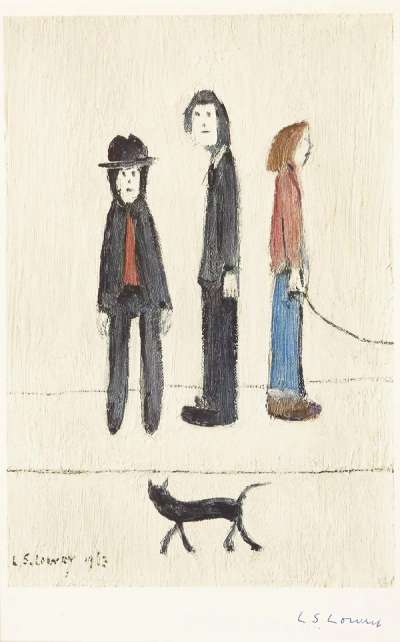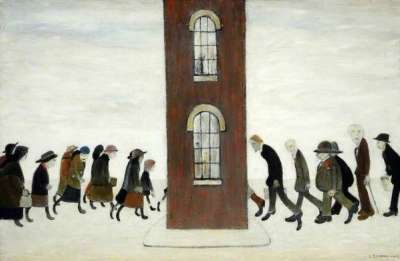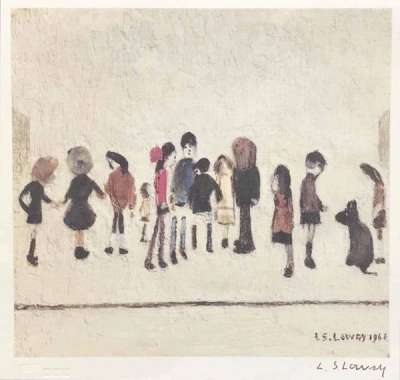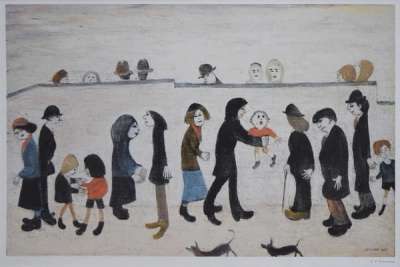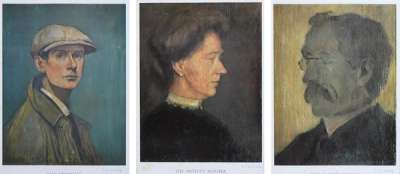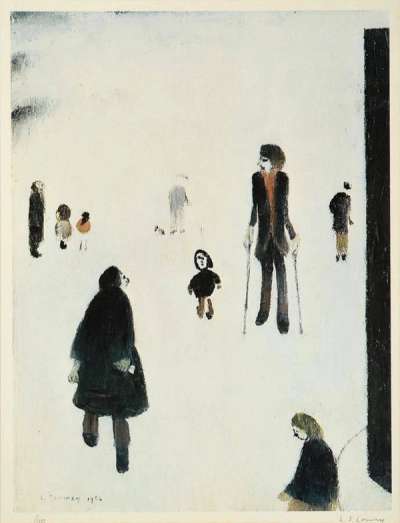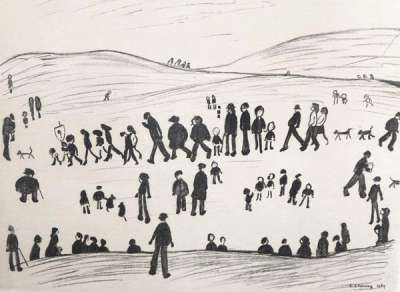Figures
Though known largely for his stylised, two-dimensional ‘matchstick men,’ L.S. Lowry’s Figures series demonstrates his real skill as a portrait painter. Having received less attention historically than his Industrial Scenes, scholars have recently begun reappraising Lowry as a portraitist—unsurprising, given the charming candidness of his Figures.
L S Lowry Figures For sale
Figures Value (5 Years)
With £77290 in the past 12 months, L S Lowry's Figures series is one of the most actively traded in the market. Prices have varied significantly – from £90 to £10000 – driven by fluctuations in factors like condition, provenance, and market timing. Over the past 12 months, the average selling price was £2033, with an average annual growth rate of -1.12% across the series.
Figures Market value
Auction Results
| Artwork | Auction Date | Auction House | Return to Seller | Hammer Price | Buyer Paid |
|---|---|---|---|---|---|
 The Contraption L S Lowry Signed Print | 29 Oct 2025 | Forum Auctions London | £1,275 | £1,500 | £1,900 |
 Two Brothers L S Lowry Signed Print | 14 Oct 2025 | Gildings Auctioneers | £1,105 | £1,300 | £1,600 |
 Man Lying On Wall L S Lowry Signed Print | 9 Oct 2025 | McTear's | £4,675 | £5,500 | £7,000 |
 Group Of Children L S Lowry Signed Print | 7 Oct 2025 | Sworders | £1,190 | £1,400 | £1,750 |
 The Cart L S Lowry Signed Print | 25 Sept 2025 | Aubreys Auctioneers | £3,740 | £4,400 | £5,500 |
 Woman With Beard L S Lowry Signed Print | 13 Sept 2025 | Adam Partridge Auctioneers & Valuers | £680 | £800 | £950 |
 The Family L S Lowry Signed Print | 13 Sept 2025 | Adam Partridge Auctioneers & Valuers | £1,020 | £1,200 | £1,450 |
 Man Holding Child L S Lowry Signed Print | 9 Jul 2025 | Forum Auctions London | £850 | £1,000 | £1,250 |
Sell Your Art
with Us
with Us
Join Our Network of Collectors. Buy, Sell and Track Demand
Meaning & Analysis
Though known largely for his stylised, two-dimensional ‘matchstick men,’ Lowry’s Figures series demonstrates his real skill as portrait painter. S. Lowry was also a skilled portraitist. His portraits have received less critical attention than his Industrial Scenes or his Town and Street Scenes, but recent trends in scholarship have been focusing on reappraising Lowry as an underrated portraitist, opening the door for newly-found appreciation of the artist.
One of the epitomes that stuck with Lowry the most, to the artist’s admittance, was that of being a naive “Sunday painter”. While Lowry is now widely and critically appreciated as one of the most meaningful British artists of the 20th century, this critical appraisal was not always as strong. Initially, Lowry’s stylised and repetitive depictions of the North, which his paintings have come to visually signify, were dismissed as the work of a skill-less amateurish artist. Lowry, however, was dedicated to his craft and spent most of his nights painting and training under the Impressionist painter Adolphe Valette. While many have already claimed that Lowry’s choice of colour palette shares little with the Impressionist love for colours, Lowry and Impressionist painters nonetheless shared a fascination for stylised depictions of people entertaining themselves in the urban environment, suffice to think of Gustave Caillebotte's Le Ponte De l’Europe, which has been the focus of much recent interest and different exhibitions.
